Oatlands Palace and its Ill-Fated, Summer Bride
Early on what must have been a cold February morning in 1542, just after sunrise, a young woman walked out of her lodgings and made her way towards a scaffold and the executioner who awaited her. She had been condemned to die on account of her adultery and treason. The king had washed his hands of her, but it was not always thus. Just eighteen months earlier, Catherine Howard had been Henry VIII’s ‘rose without a thorn’; their marriage had been celebrated secretly at the now lost, Oatlands Palace, during the sweltering summer of 1540. In celebration of happier times, we go in search of that royal abode and the place which saw Catherine joined in what would later be condemned as an unlawful union with the capricious King of England.
Oatlands Palace: A Royal Tudor Retreat
Unusually, the evidence for Catherine Howard’s presence at Oatlands Palace (often referred to in contemporary texts as ‘Otelands’) does not come from the usual flurry of letters that one might expect, dating to the summer of her marriage to Henry VIII. Instead, the true date and location of this most understated of affairs appear only as a passing mention, recorded during the trial of Lord William Howard, Catherine’s uncle, on the 22 December 1541, some seventeen months after the event. These records state:
.. after the marriage, the said Katharine [Howard] and Francis [Dereham] confessed, alleging in excuse a secret contract of marriage between them; which evil life and contract they did, 31 May 32 Hen. VIII., and at other times, traitorously conceal from the king, until the said Katharine (the king believing her to be chaste and free from other matrimonial yoke), at Otelands, 28 July 32 Hen. VIII., arrogantly contracted and coupled herself in marriage with the king.
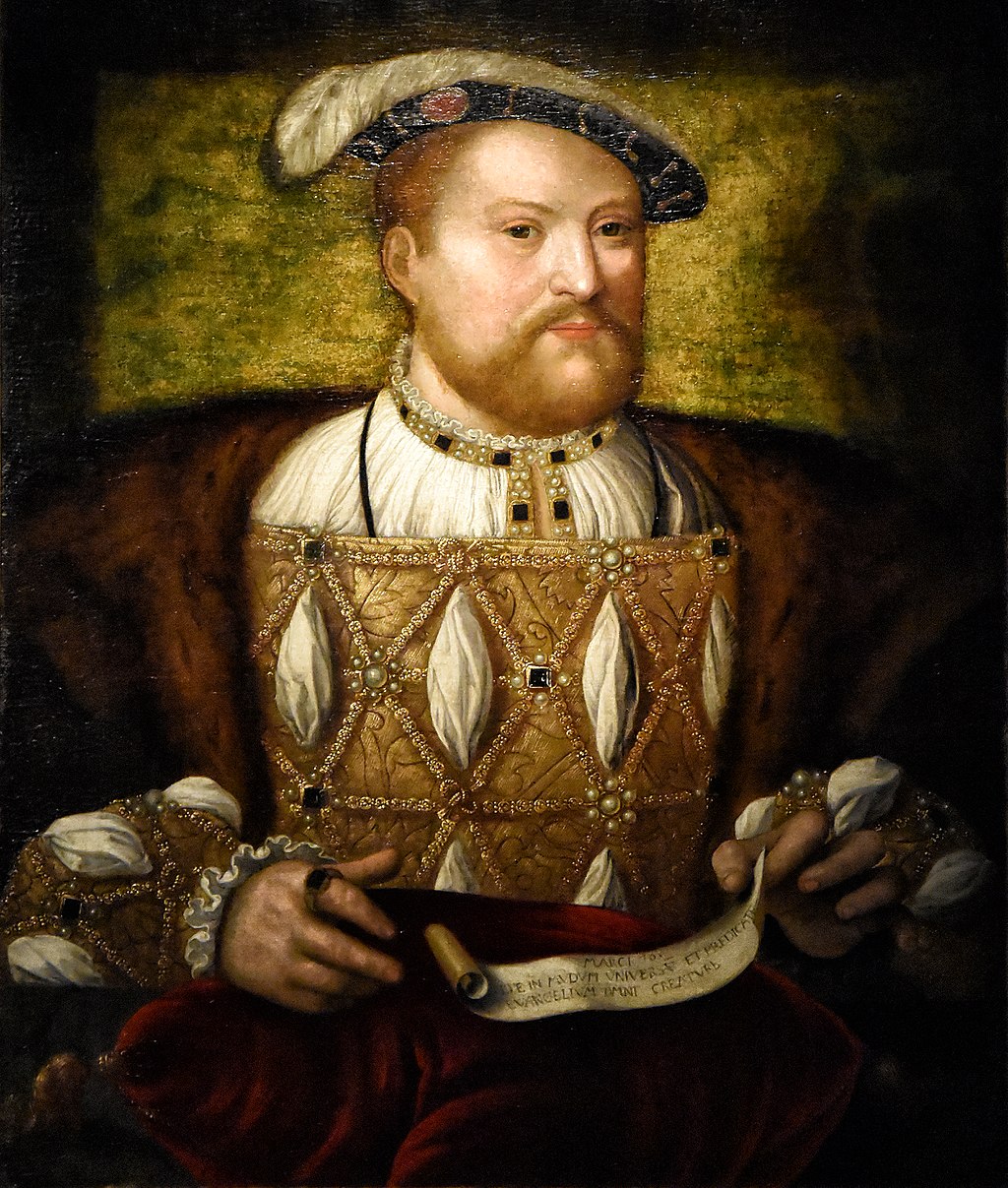
If not for the existence of this document, we would undoubtedly believe instead that the ceremony took place at the beginning of August 1540, at Hampton Court, as stated in the near-contemporary chronicles of Edward Hall and Thomas Wriothesley. The former declares that:
The eight day of August, was the Lady Katheryn Haward, niece to the duke of Norfolk and daughter to the lord Edmond Haward, shewed openly as Quene at Hampton Court.
Note that Hall does not actually mention the wedding itself, which is inferred (correctly) to have occurred at some earlier point. However, Wriothesley states:
This yeare the eight daie of Awgust, being Sondaie, the King was maried to Katherin Hawarde, daughter of the late Edmond, deceased, and brother to the Duke of Norfolke, at his mannor of Hampton Court, and that daie she dined in her great chamber under the cloath of estate, and was there proclaymed Queene of Englande.
This date of 8 August, for Catherine’s first appearance as Henry’s queen, has led to contradictions regarding the date and place of their nuptials, as seen in accounts penned by later historians. However, as the trial documents are truly contemporary, we must take this as our primary evidence.
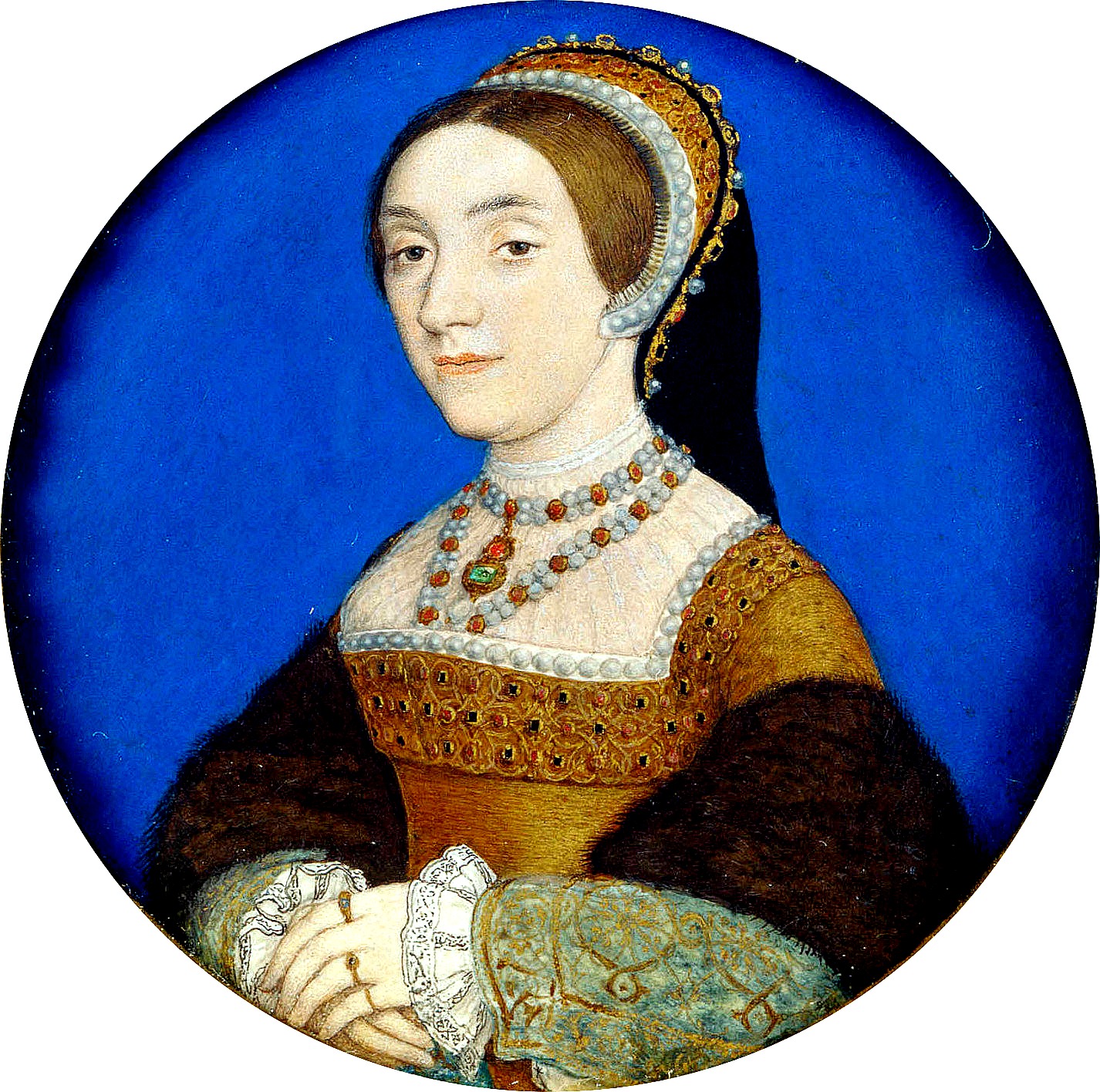
The reason for such discretion over the king’s fifth marriage is clear in the Letters and Papers of Henry VIII. During the summer of 1540, the delicate matter of the day was the annulment of Henry VIII’s marriage to Anne of Cleves. Henry had to tread carefully, ensuring no mortal offence was taken by Anne’s brother, Wilhelm, Duke of Cleves, having seen his sister cast aside after just over six months of marriage.
State papers are painstaking in recording ‘the Lady of Cleve’s’ complicity in the proceedings and her gracious acceptance to become the ‘king’s sister’, not to mention a wealthy femme sole [definition: a woman capable of supporting herself and making her own, independent decisions]. At the same time, all that the French ambassador was able to report on the matter to his master, King Francis I, on 21 July 1540 was that:
It is commonly said that this King will marry a lady of great beauty, daughter of Norfolk’s deceased brother.
And in a separate letter of the same date that:
[He /Marillac] must not omit that the cause of this sudden settlement of so important an affair [the annulment of Henry’s marriage to Anne of Cleves] is said to be that this King has already consummated marriage with this last lady, relative of the duke of Norfolk, and it is feared she is already enceinte [pregnant]. Cannot affirm this otherwise; for these are things which are kept secret.
Clearly, even Marillac himself knew that he was being kept well and truly in the dark. However, he was not alone. In a rather gossip-laden letter, written only after Catherine and Henry’s marriage was made known publicly, the French Ambassador retrospectively explains what little he knew of the events unfolding behind closed doors. He reports that whilst at Hampton Court, the king had left to go ‘to the chase’ with a small hunting party and that ‘most of the lords [had] retired to their houses’. Our supposition must be that almost as soon as the annulment of Henry’s marriage to Anne of Cleves was granted, the king dismissed the wider court and took off to nearby Oatlands, with only a small and trusted circle. Here, the young Catherine Howard was married to the King of England on 28 July 1540.
Interestingly, Henry would also retreat to Oatlands after his final marriage to Katherine Parr; it was a kind of honeymoon for the newlyweds. Under less happy circumstances, Mary I would use Oatlands Palace to withdraw from the glare of the court following the embarrassing debacle of her fantom pregnancy in the final year of her life, 1558. And so we see Oatlands being used repeatedly as a place of escape from the wider court; a place in which a Tudor monarch might find a modicum of privacy in the midst of an otherwise very public life.
Oatlands Palace – The Queen’s Palace
By the mid 1530s, the principal country seat of the English monarchy had moved westwards from Greenwich to Hampton Court. According to Simon Thurley’s contribution in Poulton’s Excavations at Oatlands Palace, the acquisition of Oatlands in 1537 from the wealthy Reed family was:
… part of a project masterminded by Thomas Cromwell, to provide the new palace [Hampton Court] with the ancillary lands and subsidiary houses necessary for its status.
At its peak, The Honour of Hampton Court consisted of a huge area covering 40,000 acres. This included the palaces of Oatlands and later, Nonsuch. The transformation of Oatlands was closely linked with the development of Henry’s principal out of town residence; the same master craftsmen oversaw its remodelling, and a road was built directly between the two in the summer of 1537. It has been proposed by Thurley that the intention was that Hampton Court would be assigned as the king’s residence, Oatlands the queen’s, and Nonsuch reserved for the use of Edward, Prince of Wales. Given the timing of this building project, the hypothesis is that the manor of Oatlands was originally intended as a palace for Anne of Cleves.
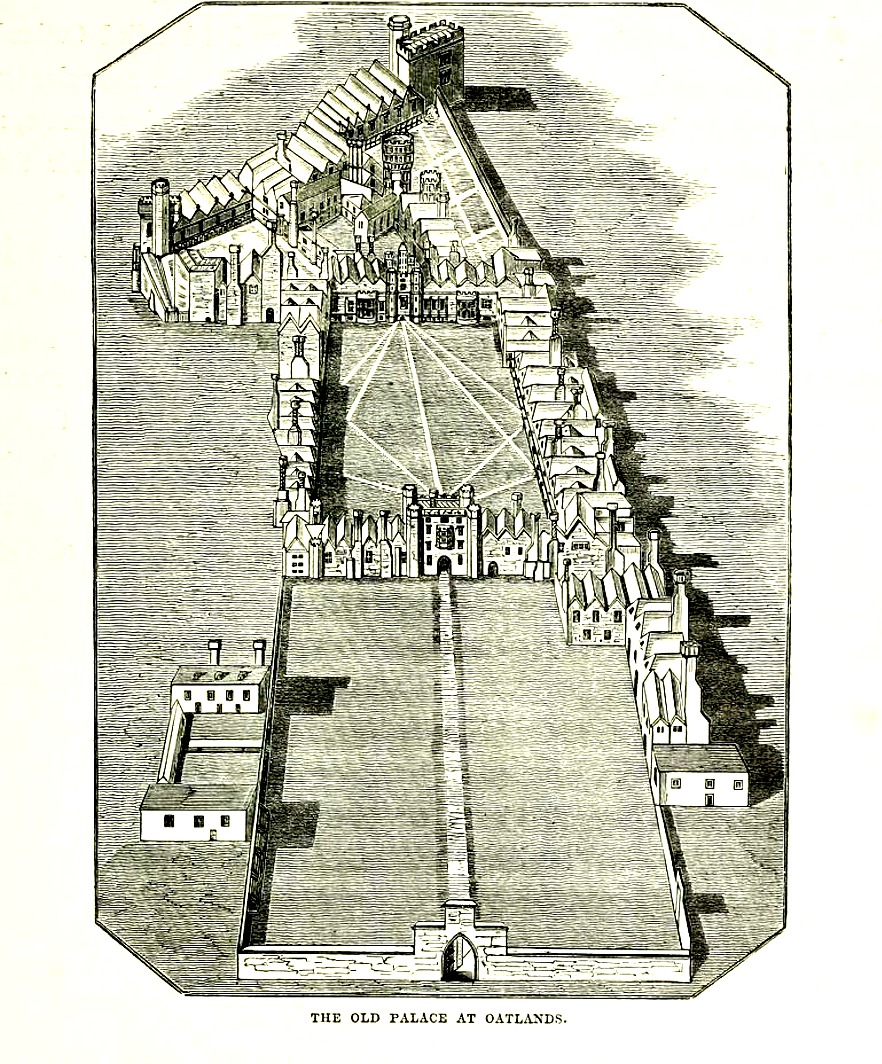
Oatlands Palace: A Manor House Transformed
The Tudor manor house that Henry acquired in 1537 seems to have been a fine property indeed. The Reeds were wealthy London merchants whose city residence was renowned as being the finest in London: Crosby Place (a former residence of Richard III, whose great hall still survives in Chelsea to this day). Their country home can surely have been no different.
According to Thurley, the relatively modest amount of money (£17,000) required to remodel the house in order to accommodate a reduced royal riding court implies its pre-existing grandeur. Thankfully, a handful of drawings of the Tudor palace survive before its demolition in 1650. These, combined with extensive excavations of the site in the twentieth century, provide a fairly comprehensive picture of the palace that welcomed Catherine as queen during that heady summer of 1540.
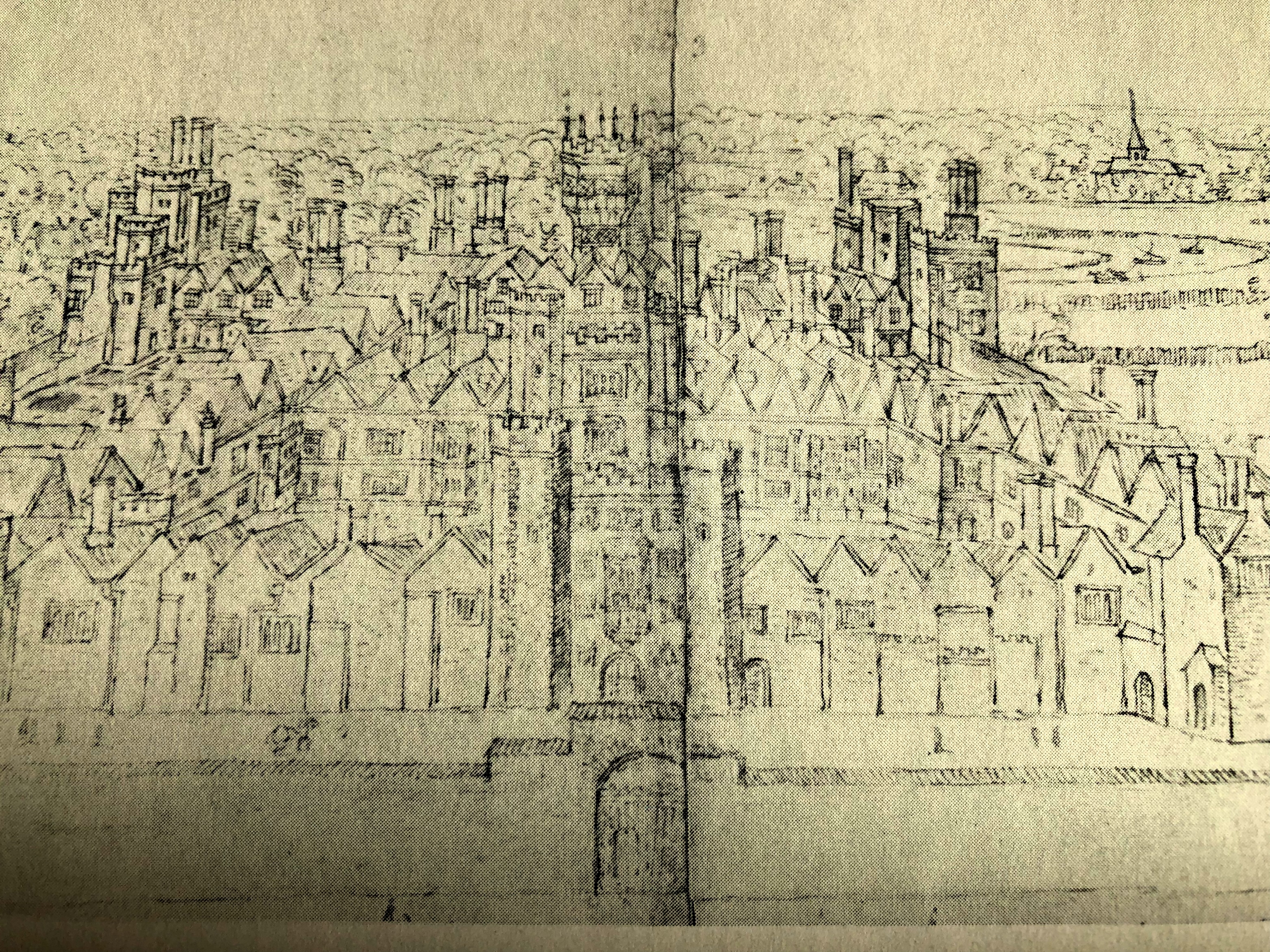
The building of the palace was phased over six to seven years (1538-44/5) and it is uncertain exactly how much of the work had been completed by the time Catherine first laid eyes on this jewel in Henry’s crown. However, it is clear that the entire privy apartment complex surrounding the inner courtyard, the inner gatehouse, and part of the middle court (possibly including the outer gatehouse) would have already been standing. As the royal party approached, possibly along the road from Hampton Court, surely Catherine must have marvelled at the tall, timber-framed, Prospect Tower. It was the most unusual and outstanding feature of the palace. With its jettied upper storey, mullioned and transomed windows, the tower would have soared above the palace’s many gabled roofs, the glazing glinting in the morning sun and setting it ablaze like a beacon.
The Royal Apartments
Initially, Oatlands was a traditional courtyard house, surrounded by a moat. Within this moat, the first phase of development focused on the creation of the principal private apartments of the king and queen. This involved ‘the translating and taking down of divers chambers’, including the great hall (which was lost) and the original chapel (which was ‘translated’ into new chambers for the queen). Although the royal lodgings are known to have occupied the north-eastern and south-western wings of the original manor house respectively, the exact layout of the rooms remains unclear, as most of the excavations that have taken place on-site have focused on the buildings sited in the outer courts.
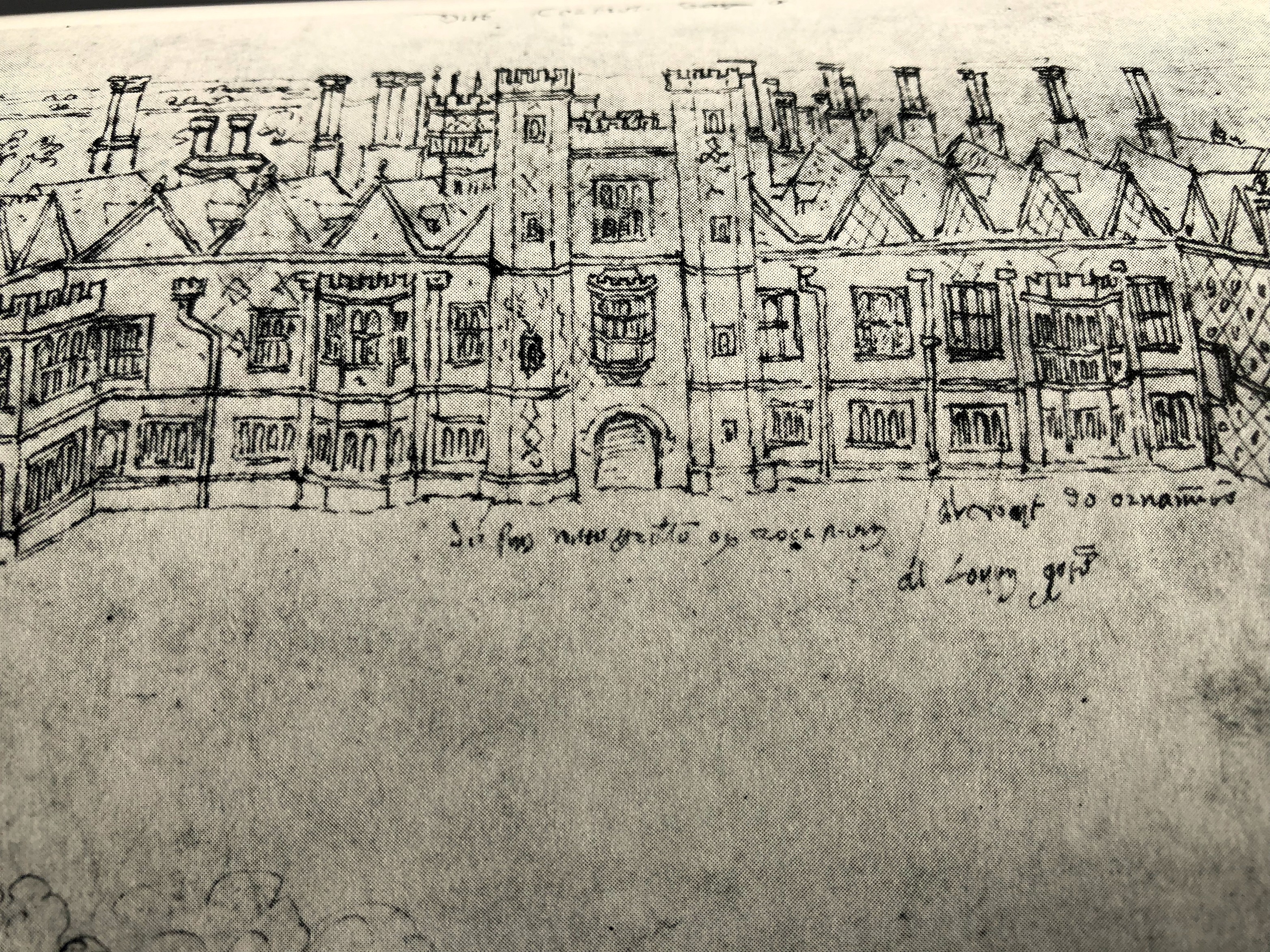
Therefore, according to the Excavations of Oatlands Palace, ‘all that can be deduced is informed conjecture’. However, the pattern is clear. Having passed underneath the inner gatehouse to enter the inner courtyard:
It is likely that the entrance to the royal apartments was in the north range of the inner court [directly ahead of any visitor to court] where the great hall had been…This would suggest that the two suites of lodgings were entered at the north and then continued around the east and west sides of the court meeting at the south. Although it is unusual for the innermost royal apartments to be in an entrance range, it was normal for them to be south facing. Thus at Oatlands, the existing configuration of the house required a non-standard response from Henry VIII’s architects.
The sketch of the privy court gatehouse range made by Anton van der Wyngaerde in 1559, clearly shows the most privy of the royal chambers, running across the front of the range at first-floor level. According to Colvin’s, The History of the King’s Works, Volume IV, this inner gatehouse, ‘with its diapered brickwork and turreted gateway [to] the new range, formed an imposing entrance to the king’s house’. Current thinking is that the queen occupied the western range, shown to the left of the gatehouse. When viewing the aforementioned image, Catherine’s bedchamber was positioned where the large, bay window projects outwards from the frontage of the range.
The inventory taken after the death of Henry VIII provides us with a glimpse into the lavish interiors of Oatlands. Unfortunately, there is little if anything that connects us with Catherine directly; perhaps this is to be expected given her ignominious end. However, maybe for the briefest time, she sat upon one of two chairs of:
Carnacion vellat [carnation velvet] fringed with carnacion silke[. A] throne for the kinge having two knoppes [?knobs] of copper and gilte[,] thither for the queen having two knoppes of Ankomy silvered.
The Queen’s Lodgings
Seventeenth century inventories suggest that the queen’s lodgings were larger than the kings, though there is a note of caution here. Once more, Poulton’s Excavations of Oatlands Palace states:
It is very unusual for a royal palace to have more extensive accommodation for the queen than the king and the layout at Oatlands either demonstrates that Henry VIII had always intended the queen’s side to be larger, as Oatlands was to be the queen’s palace, or that in the Jacobean period the sides were swapped.
Along with the usual rooms one might expect to find in royal lodgings, it seems that the queen’s side had a series of smaller rooms, or ‘cabinets’, including a closet positioned in a tower off the queen’s garden gallery. Perhaps it was here, or in the newly built chapel, cited close to the queen’s bedchamber, that the second female member of the Howard clan was joined in holy matrimony with one of the most fickle and dangerous men in all of England.
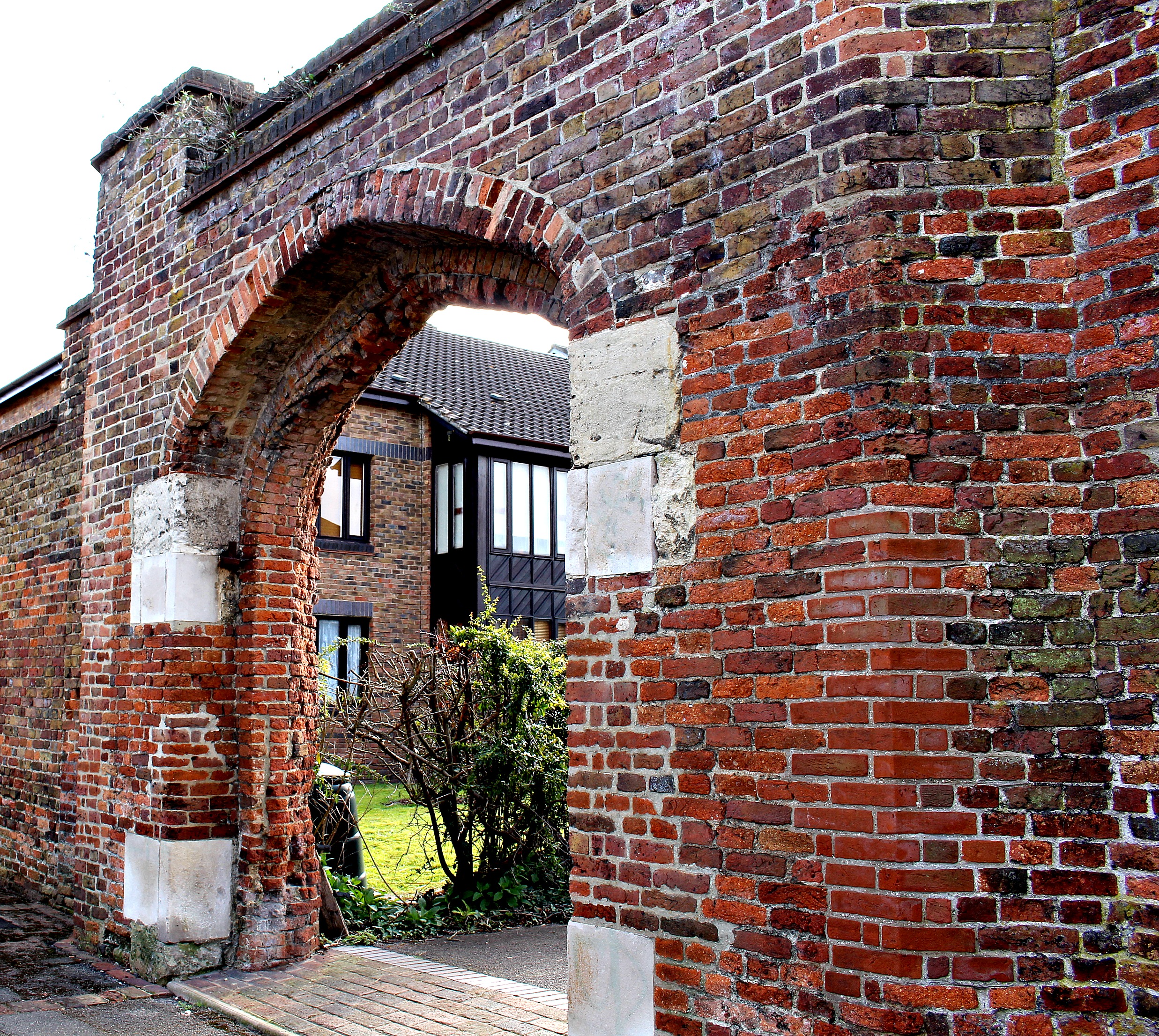
Tragically, the records reveal that Catherine was to never return to the palace. According to the Letters and Papers of Henry VIII, by the time Henry visited again, it was early December 1541. The queen had fallen from grace and her relatives were being interrogated in London. It was from Oatlands on the 8 December that the ‘Council with the King’ wrote to the Council acting in London that:
The King directs them [the Council in London] to commit the duchess of Norfolk, Lord William, and his wife, lady Bridgewater, and the others noted to be in the case of misprision of treason, to the Tower, and put their houses and goods in safe custody … As for Culpeper and Deram [Dereham], if the latter can tell no more, they are (with convenient warning to prepare their souls) to be executed.
The story of Oatlands, sadly, is all too brief. Barely 100 years after it was first built, the house finally came to its own premature end in 1650. It was sold by parliament after the English Civil War for the sum of £4000. Its new owner soon demolished the building and sold the bricks to Sir Richard Weston of Sutton Place, leaving barely traces of a once-grand Tudor palace above ground. If you visit the site today, it is very much in your imagination that you will see Oatlands once again rising up from the ground, resplendent in the summer sunshine, all too briefly a place of giddy happiness for its ill-fated. summer bride.
Visitor Information
A visit to the site of the lost palace of Oatlands must surely be reserved for only the most diehard of Tudor enthusiasts. During the course of writing the In the Footsteps books, on several occasions, I have been confronted merely with earthworks in the ground, the only surviving clue to a lost Tudor mansion. In these instances, the surrounding, quiet fields give a moment’s repose to imagine the glorious edifice that might have still stood to this day, if not for a quirk of fate intervening to reduce it to its foundations.
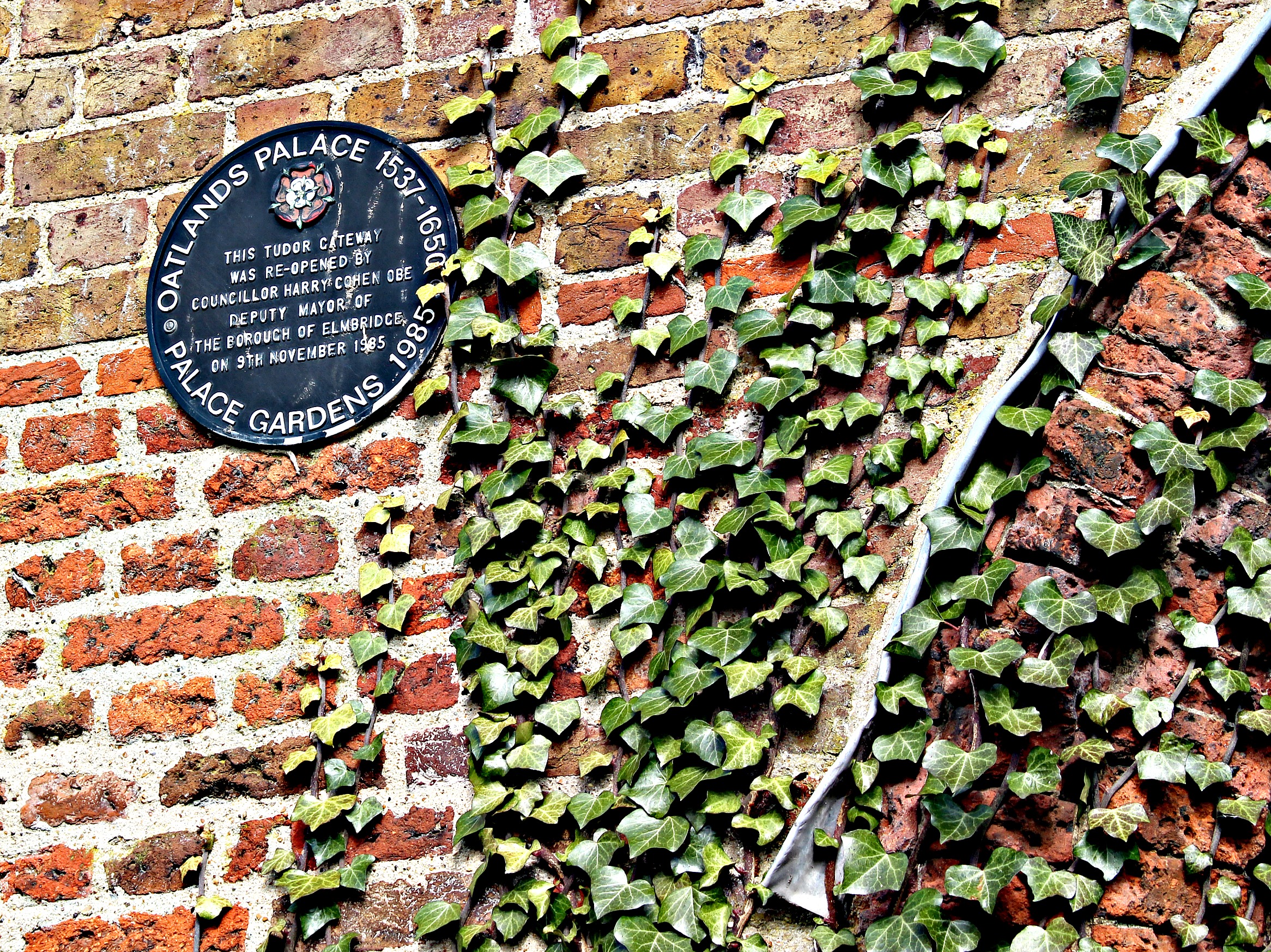
However, the time traveller is afforded no such luxury at the site of this, one of Henry’s most impressive palaces. The whole area is now covered with a modern-day housing estate. Yet strangely, amongst the uninspiring twentieth century architecture, the visitor will notice sections of wall, standing around eight feet high, constructed of small, uneven looking red-bricks, typical of the period. It is the tell-tale sign that you are in the right spot.
If you wish to visit the most prominent feature of the site, make your way to Old Palace Road (Postcode: KT13 8PQ). Park at the far end and go on foot, ahead to Rede Court. This pedestrian-only footpath leads to Gate Court, which is straddled by the Tudor gateway that once gave access to the palace compound. You will not be kept long, so you may wish to include this on your own progress from Hampton Court Palace, along with nearby Chertsey Abbey, and possibly onto Windsor Castle if time allows.
There are no amenities on site. The local museum at Elmbridge houses a collection of artefacts recovered during excavations of the palace over the years. Occasionally these are exhibited. If you wish to find out more, go to the museum website.
NB: The above post was adapted from an entry in ‘In the Footsteps of the Six Wives of Henry VIII’. If you’d like to read more like this, you can purchase your copy here.

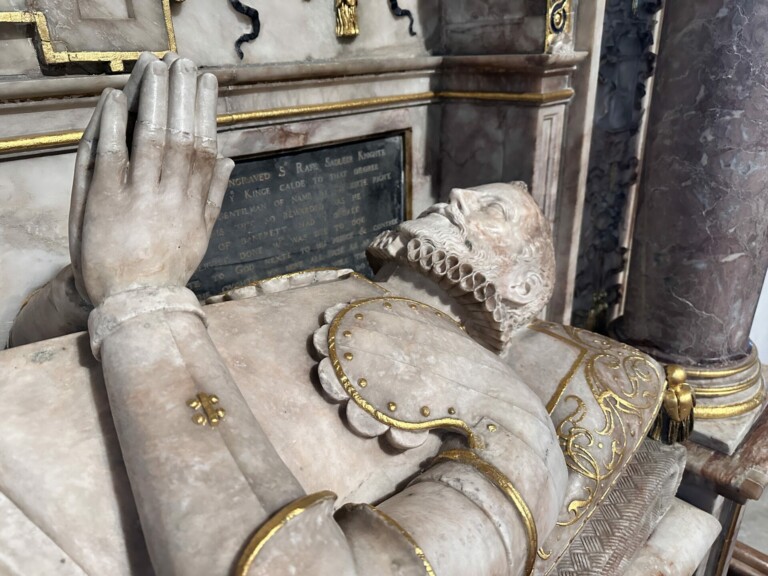
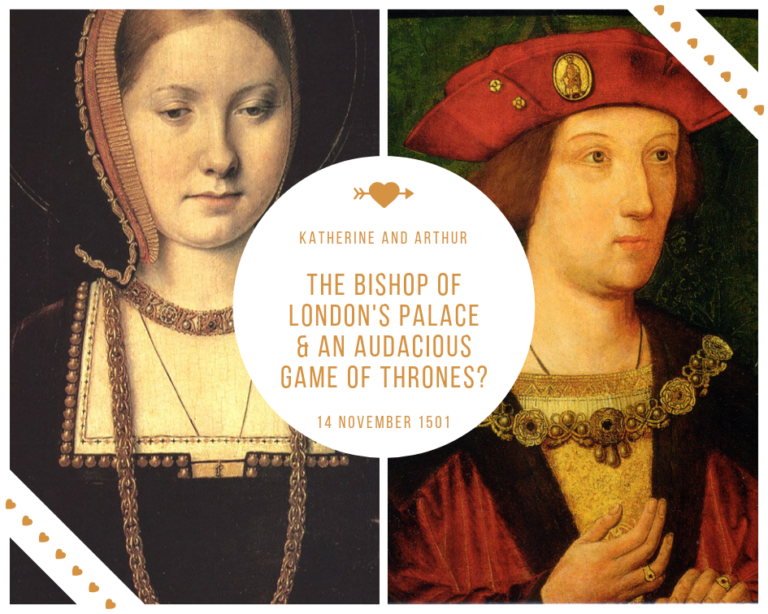
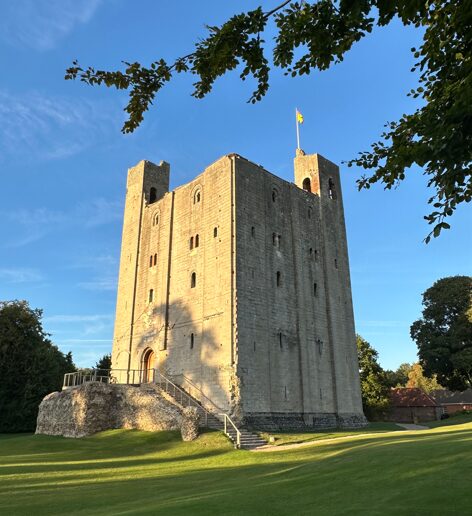
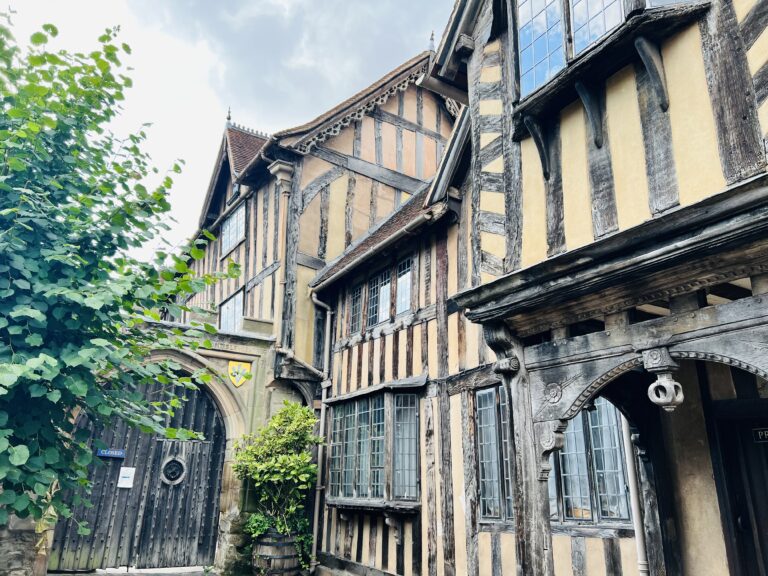
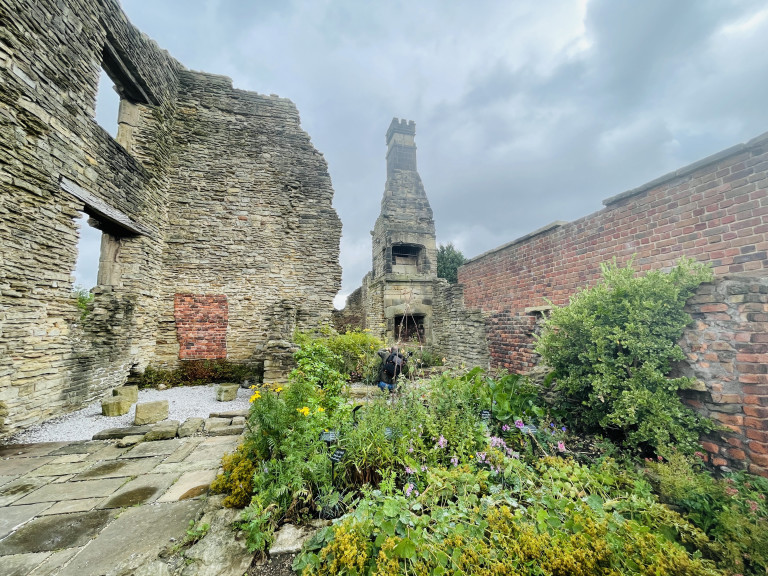
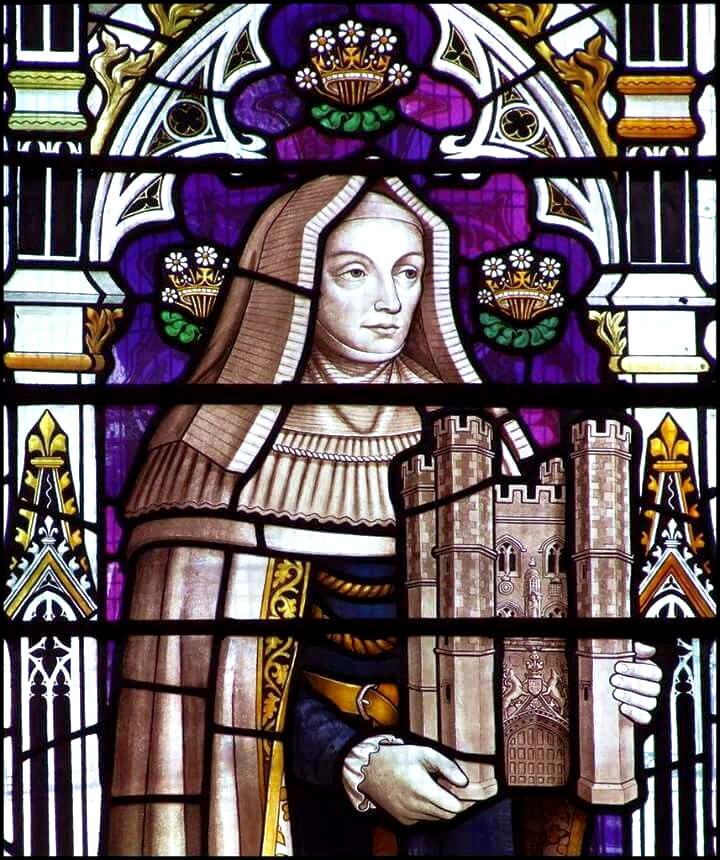
3 Comments